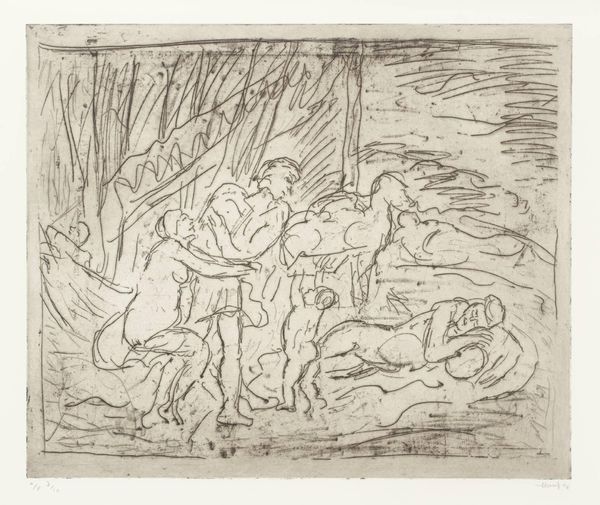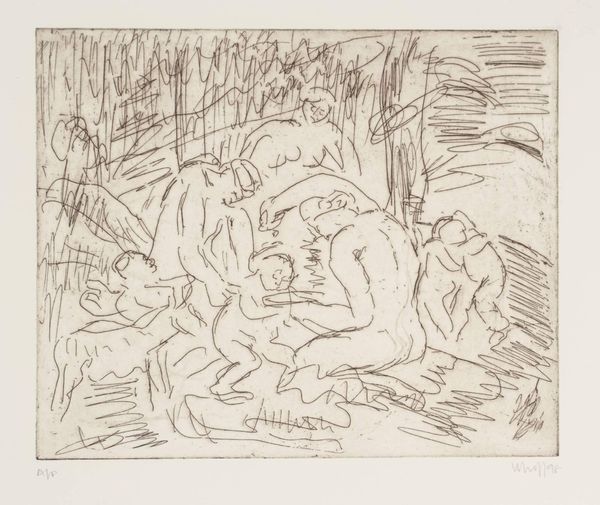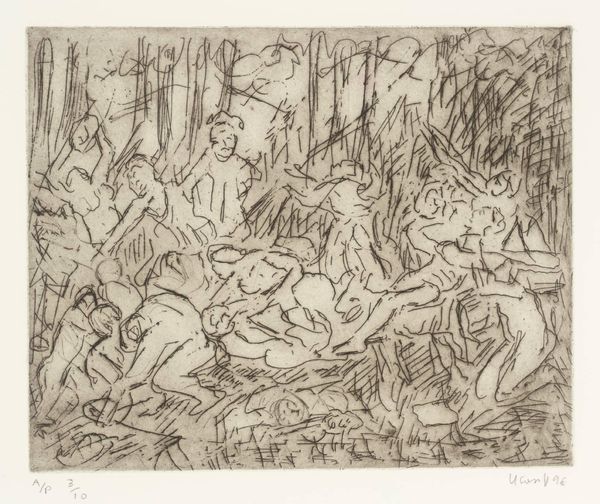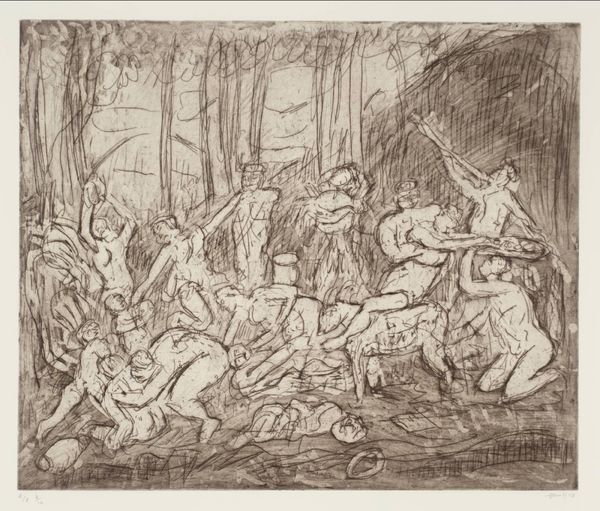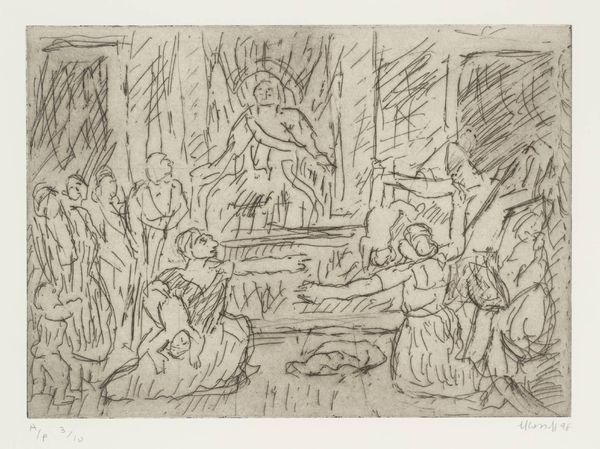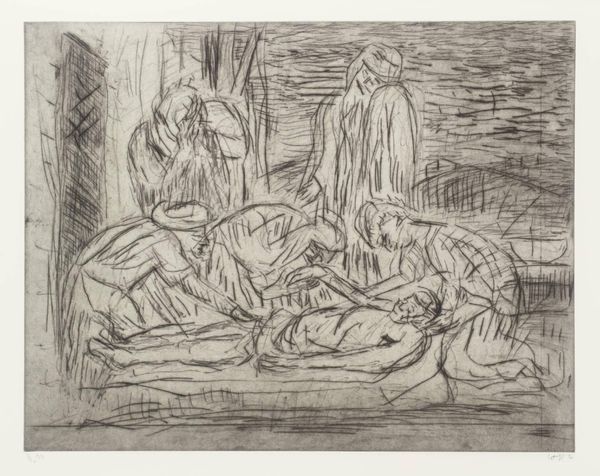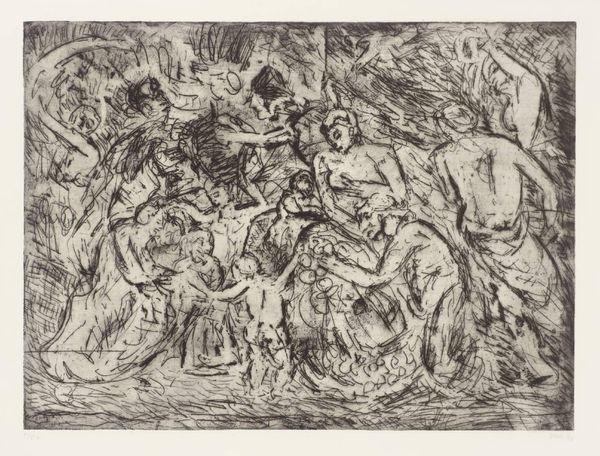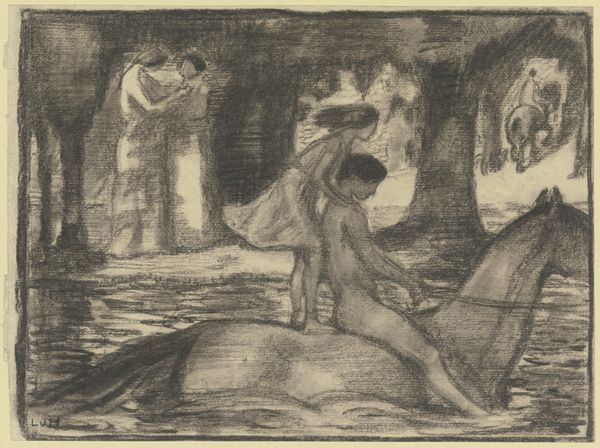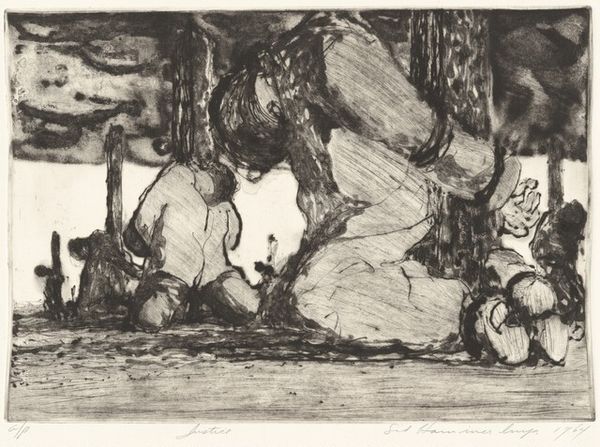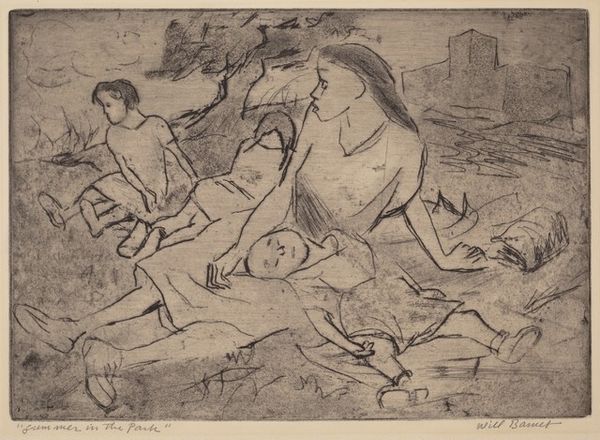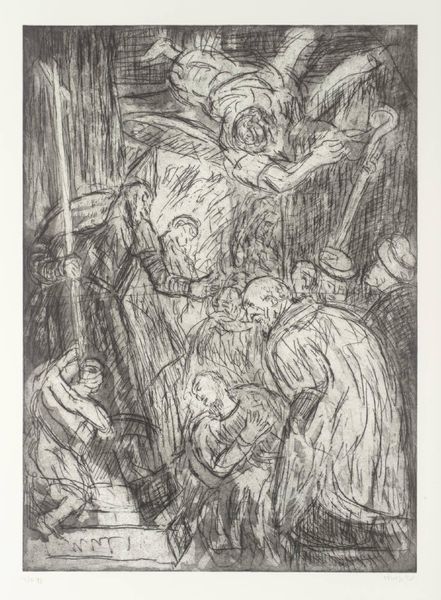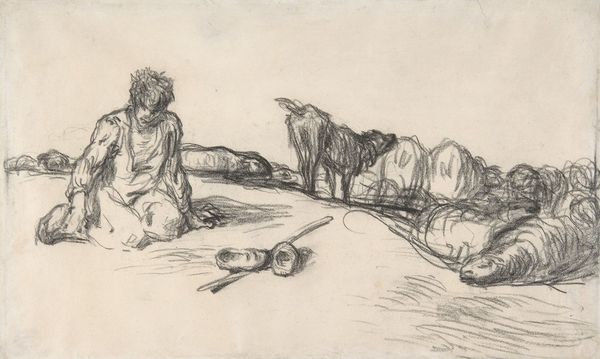
Dimensions: image: 429 x 657 mm
Copyright: © Leon Kossoff | CC-BY-NC-ND 4.0 DEED, Photo: Tate
Curator: Leon Kossoff, born in 1926 and passing in 2019, created this etching, "Cephalus and Aurora (2)". It's part of the Tate Collection, measuring 429 by 657mm. Editor: It feels like a fever dream, all restless energy and blurred figures. The figures seem to be caught in some kind of struggle, or maybe a dance. Curator: The story of Cephalus and Aurora is one of divine love and human rejection. Aurora, the goddess of dawn, abducts the mortal Cephalus, but he longs for his wife. Editor: There's a real sense of yearning in it, though. You can feel that pull, the wanting to be somewhere else. Kossoff really captures that ache. Curator: Kossoff's focus on depicting the everyday realities of post-war London, makes this a surprising subject, steeped in classical mythology. Editor: It is fascinating how he merges something monumental with the mundane. It really stirs something in you. Curator: A compelling reminder of how artists can revitalize canonical tales. Editor: And how a simple etching can evoke such complex emotions.
Comments
tate 7 months ago
⋮
http://www.tate.org.uk/art/artworks/kossoff-cephalus-and-aurora-2-p11691
Join the conversation
Join millions of artists and users on Artera today and experience the ultimate creative platform.
tate 7 months ago
⋮
This print is one of many etchings executed by Leon Kossoff in response to, and literally in the presence of, oil paintings by old masters; in this case Cephalus and Aurora, 1629-30 (National Gallery, London) by Nicolas Poussin (1594-1665). Tate owns three prints by Kossoff after this Poussin painting (Tate P11690-2). The artist’s ability to explore a number of separate responses while making drawings and prints from a single subject is illustrated in these etchings. This version is printed in brown ink on white paper. It was printed in an edition of twenty with ten artist’s proofs; Tate owns number three of the artist’s proofs.
